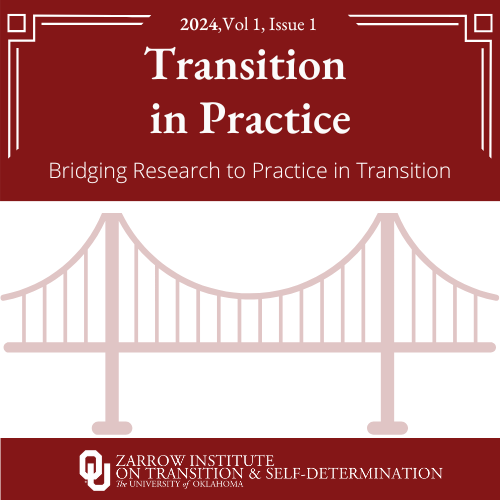Planning a Virtual Transition Fair: Using Technology to Reach More Families
Main Article Content
Abstract
The COVID-19 pandemic required many school services to be moved online. This included special education services in order for students with disabilities to have access to the services in their Individualized Education Programs. Transition fairs provide an excellent opportunity for schools to promote the transition process and connect students and families with resources and agencies for life after high school. However, like other school services, in-person transition fairs were not possible for many schools at the peak of COVID-19. As we emerge from a time when online services were necessary it is possible to take the lessons learned to develop high quality virtual transition fairs that can allow for more participation from busy students and families. This paper describes how to go about implementing a virtual transition fair. We provide an example of a step-by-step process to do so as well as examples of products needed to hold such an event.
Article Details

This work is licensed under a Creative Commons Attribution-NonCommercial-NoDerivatives 4.0 International License.
This is an open access article distributed under the terms of the Creative Commons License 4.0, CC BY-NC-ND 4.0
References
Baugher, R., & Nichols, J. (2008). Conducting a rural school district transition fair: Successes and challenges for students with disabilities. Education, 129(2), 216-224.
Fabian, E., Dong, S., Simonsen, M., Luecking, D., & Deschamps, A. (2016). Service system collaboration in transition: An empirical exploration of its effects on rehabilitation outcomes for students with disabilities. Journal of Rehabilitation, 82, 3–10.
Individuals with Disabilities Education Improvement Act of 2004 (IDEA). Pub.L.No.108-446, 118 Stat. 2647 (2004) [Amending 20 U.S.C. §§ 1400 et seq.]
Jameson, J. M., Stegenga, S. M., Ryan, J., & Green, A. (2020). Free Appropriate Public Education in the time of COVID-19. Rural Special Education Quarterly, 39(4), 181-192.
Kellems, R. O., & Morningstar, M. E. (2010). Tips for transition. Teaching Exceptional Children, 43(2), 60-68.
Kohler, P. D., Gothberg, J. E., Fowler, C., & Coyle, J. (2016). Taxonomy for transition programming 2.0: A model for planning, organizing, and evaluating transition education, services, and programs. Western Michigan University.
National Secondary Transition Technical Assistance Center (2014). Transition fair toolkit. Western Michigan University, Rashell Bowerman, Lydia Schuck, June E. Gothberg, Jennifer L. Coyle, and Paula D. Kohler.
Newman, L., Wagner, M., Knokey, A.-M., Marder, C., Nagle, K., Shaver, D., Wei, X., with Cameto, R.,Contreras, E., Ferguson, K., Greene, S., and Schwarting, M. (2011). The post-high school outcomes of young adults with disabilities up to 8 years after high school. A Report From the National Longitudinal Transition Study-2 (NLTS2) (NCSER 2011-3005). SRI International.
Povenmire-Kirk, T., Diegelmann, K., Crump, K., Schnorr, C., Test, D., Flowers, C., & Aspel, N. (2015). Implementing CIRCLES: A new model for interagency collaboration in transition planning. Journal of Vocational Rehabilitation, 42, 51-65.
Scheef, A. R., Hollingshead, A., Raney, T., Malone, K., Goebel, E., & Hayes, J. (2022). School personnel perceptions of video conference IEP meetings. Journal of Special Education Technology. https://doi.org/10.1177/01626434221108888
Test, D. W., Mazzotti, V. L., Mustian, A. L., Fowler, C. H., Kortering, L., & Kohler, P. (2009). Evidence-based secondary transition predictors for improving postschool outcomes for students with disabilities. Career Development for Exceptional Individuals, 32(3), 160-181.
United States Bureau of Labor Statistics. (2020). Persons with a disability: Labor force characteristics summary. https://www.bls.gov/news.release/disabl.nr0.htm

